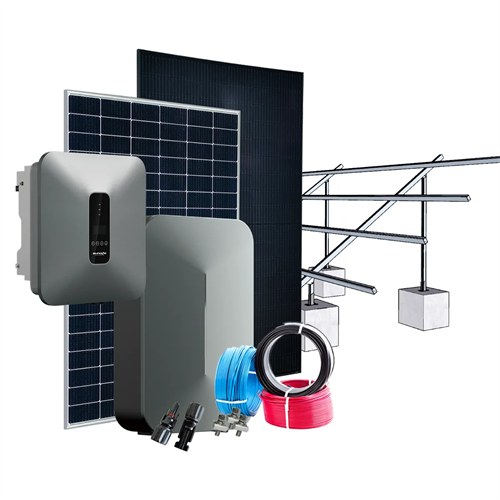Combining photovoltaic (PV) systems with energy storage systems is something that is greatly being focused on the user side on both home and commercial sides of the spectrum. The article here evaluates the positive aspects of rising energy storage systems market demand and explains, in detail and with good supporting evidence, how the integrated photovoltaic and storage solutions are revolutionizing energy consumption patterns. The present-day energy presentations are continuously seeing changes and adaptations in energy use.
Market Demand for Energy Storage Systems
The market demand for energy storage systems, is determined by many factors which are market driven. One reason that is quite a powerful reason for the market is the transformation of energy use towards renewable energies to fight climate change. The benefits of photovoltaic systems outweighing the disadvantages of page. Solar energy is harnessed successfully using photovoltaic systems. But capturing solar energy and generating electricity is possible only when there is sunlight and this is where the weakness comes. Energy storage systems are the linker in this case and they help in storing any power that has been generated during sunny days to be used on the following days when there is no sunshine or when it is cloudy.
Because of the increasing power rates, both residential and commercial consumers are inclined to look for alternate sources of energy. Energy rates have become more expensive and have had more fluctuations over the past few years, prompting many consumers to look for ways to be energy self-sufficient and save on energy costs. These integrated photovoltaic and storage systems also serve a great purpose in providing these users with a means through which they can generate and store their own electricity which is less power from the grid is necessary and meeting this objective.
In addition, many countries also provide support and patronage for the efforts to popularize renewable sources of energy. Tax incentives such as tax credit, rebate, and other forms of subsidization policies are allowing wider penetration of PV and storage systems investment even to the lower class.
Economic Benefit Analysis of Energy Storage Systems
With respect to energy storage systems and the economic returns that accrue from it, the picture that emerges is indeed positive for domestic and commercial users. The possibility of avoiding strains in electricity bills remains as one of the most prominent benefits of all. With the help of electric storage systems, a user will be able to use power at more convenient times, that is, when energy is generally more expensive. This will be achieved by purchasing the energy during hours when the electricity cost is low or solar energy, when the credence of purchasing power is at zero and using it when the cost of energy is at its peak. Water and heat are the preferred carriers of energy in this method. And this can be advantageous in the regions which are having TOU tariffs or cost of electricity a person pays for is divided into different blocks and each block corresponds to a certain period of use.
For companies, these advantages are much stronger. Energy requirements and their educational patterns for commercial consumers are greater than for domestic consumers. In this regard, energy storage systems can eliminate demand charges which are incurred if excessive energy is drawn from the grid in any billing cycle. Such savings on the capacity charges is achievable by using stored energy when power demand charges are highest.
The incorporation of energy storage systems with solar systems contributes to increasing the profitability of solar energy systems. This is because without storage a lot of the solar energy generated during the day would go to waste. An integrated storage system captures this surplus for use later, which improves the system’s performance, efficiency and effectiveness as a whole. In the long run, the efficiency gained results in lesser number of pay back periods and higher long term profit maximization.
Aside from the reduction in costs, it is also evident that energy storage systems can provide enhanced energy security and energy reliability. For both households and corporations, power interruptions can be highly disruptive, if not dangerous. An amalgamated PV and storage system can provide protection from power outages means delivery of electricity remains uninterrupted even in the instance of a grid black out. This is especially important for those firms whose operations depend on constant electricity supply known as critical operations such as data centers, hospitals and factories.
Conclusion
The combination of photovoltaic units and energy storage systems is a consumer-oriented trend gaining momentum worldwide, both in the household and in the business’, environment makes perfect sense in today’s time. As the reason for expanding market is dictated supply of energy independence and support from governments, these technologies are crucial in energy systems of today’s world.
Analysis of economics indicates that taking steps to integrate PV with storage systems leads to a number of benefits including reduced costs, increased energy security, and improved returns on investment. With the advancement of the technology and its decreasing cost, it is expected to be very influential in the way energy is produced, stored and used. For the homeowner and business alike, the endorsement of these integrated solutions represents a move towards a better, more reliable and cost-effective energy system.

 EN
EN
 AR
AR
 CS
CS
 NL
NL
 FR
FR
 DE
DE
 IT
IT
 JA
JA
 PT
PT
 ES
ES
 TH
TH
 TR
TR
